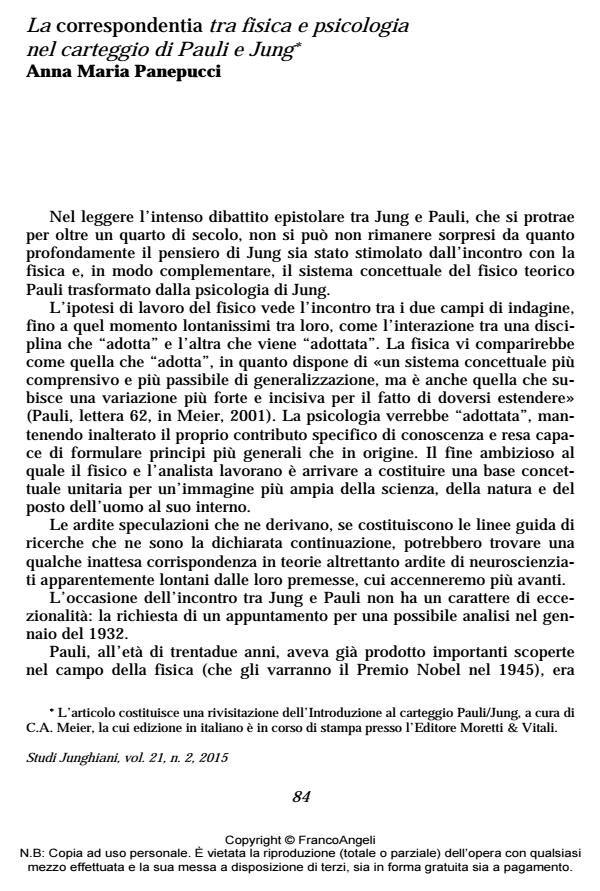The correspondentia between physics and psychology in the Jung/Pauli Letters
Journal title STUDI JUNGHIANI
Author/s Anna Maria Panepucci
Publishing Year 2016 Issue 2015/42
Language Italian Pages 15 P. 84-98 File size 102 KB
DOI 10.3280/JUN2015-042006
DOI is like a bar code for intellectual property: to have more infomation
click here
Below, you can see the article first page
If you want to buy this article in PDF format, you can do it, following the instructions to buy download credits

FrancoAngeli is member of Publishers International Linking Association, Inc (PILA), a not-for-profit association which run the CrossRef service enabling links to and from online scholarly content.
The private correspondence between Wolfgang Pauli and Carl Gustav Jung, which lasted from 1932 to 1958, represents the first research on the interaction between mind and matter operated by disciplines considered until then very distant. The Jungian concepts are, in that quarter of century, revisited and partly redefined by the critical and productive incentive of the scientist. Their research, branching out in many directions, perhaps reaches its climax in the development of the principle of synchronicity, observed by Jung in his work, as an interpretation-explanatory principle complementary to the principle of causality. The relevance of their work, open to new scenarios and to "a new idea of reality", is testified by the comparison, here just outlined, with some research and theories both in physics and in neuroscience.
Keywords: Neutral language between physics and psychology, synchronicity principle, structural induced correlations, observation process in physics and psychology, reduction of symmetry
Anna Maria Panepucci, La correspondentia tra fisica e psicologia nel carteggio di Pauli e Jung in "STUDI JUNGHIANI" 42/2015, pp 84-98, DOI: 10.3280/JUN2015-042006